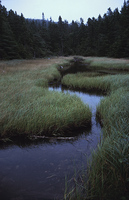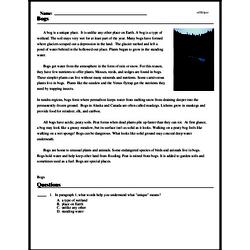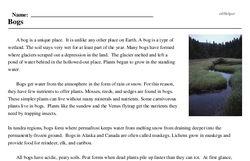Bogs
A bog is a unique place. It is unlike any other place on Earth. A bog is a type of wetland. The soil stays very wet for at least part of the year. Many bogs have formed where glaciers scraped out a depression in the land. The glacier melted and left a pond of water behind in the hollowed-out place. Plants began to grow in the standing water.
Bogs get water from the atmosphere in the form of rain or snow. For this reason, they have few nutrients to offer plants. Mosses, reeds, and sedges are found in bogs. These simpler plants can live without many minerals and nutrients. Some carnivorous plants live in bogs. Plants like the sundew and the Venus flytrap get the nutrients they need by trapping insects.
In tundra regions, bogs form where permafrost keeps water from melting snow from draining deeper into the permanently-frozen ground. Bogs in Alaska and Canada are often called muskegs. Lichens grow in muskegs and provide food for reindeer, elk, and caribou.




